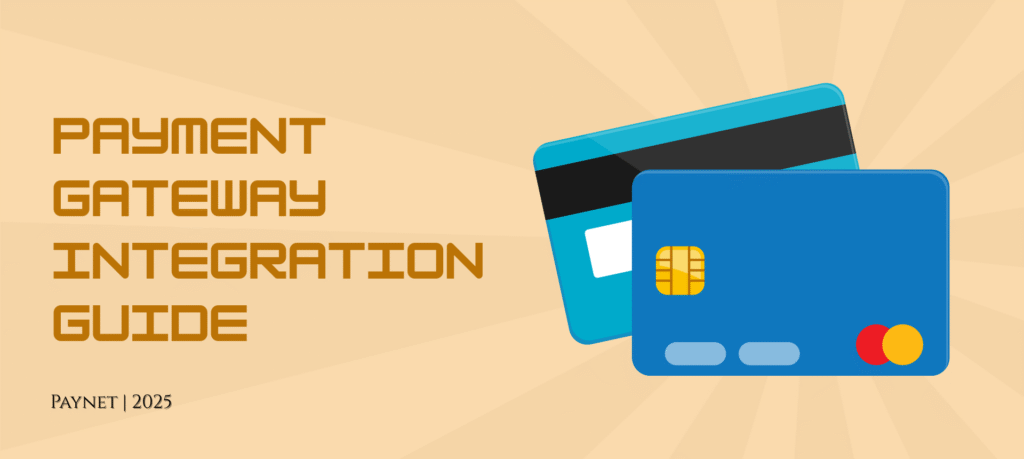User Behavior in Digital Wallet Usage: Insights That Are Shaping the Future of Digital Payments – [Cloned #1447]
Home UPI Growth and Adoption Insights: How India’s Favorite Payment System Is Shaping the Future of Finance Explore UPI growth...

Learn the best practices for integrating a payment gateway with your website—security, UX optimization, and seamless transaction flows.
A smooth and secure payment gateway integration is crucial for converting visitors into paying customers. Poor implementation can lead to cart abandonment, security risks, and lost revenue.
Whether you’re using Paynet, Razorpay, Stripe, or another provider, follow these best practices to ensure a fast, secure, and high-converting checkout experience.
Before integrating, evaluate:
✅ Supported Payment Methods (Credit/Debit Cards, UPI, Wallets, BNPL)
✅ Pricing Structure (Setup fees, transaction fees, hidden costs)
✅ PCI DSS Compliance & Security Features
✅ Developer-Friendly APIs & Documentation
✅ Global vs. Local Payment Support
Pro Tip: If targeting Indian customers, ensure support for UPI, NetBanking, and RuPay.
🔹 Use HTTPS & TLS 1.2+ Encryption
Never process payments on an HTTP site.
Enable HSTS (HTTP Strict Transport Security).
🔹 PCI DSS Compliance
If storing card data, ensure PCI Level 1 compliance.
Use tokenization instead of raw card details.
🔹 Implement Fraud Prevention
Enable 3D Secure 2.0 for card payments.
Use AI-based fraud detection (if available).
🔹 Reduce Friction
Offer guest checkout (no forced registration).
Auto-fill saved details (where possible).
🔹 Mobile Optimization
Ensure responsive design for all devices.
Support Google Pay, Apple Pay, and UPI autopay.
🔹 Clear Error Handling
Show user-friendly error messages (e.g., “Card declined – try another method”).
Provide real-time validation (invalid CVV, expired card).
|
Method
|
Best For
|
Pros
|
Cons
|
|---|---|---|---|
|
Hosted Checkout
|
Small businesses
|
Easy setup, PCI-compliant
|
Less brand control
|
|
Embedded Checkout
|
Medium businesses
|
Seamless UX, customizable
|
Requires more dev work
|
|
API Integration
|
Large businesses
|
Full control, best UX
|
Complex, needs PCI compliance
|
Startups → Use hosted/redirect checkout (e.g., Paynet QuickPay).
E-commerce stores → Embedded iframes for smoother UX.
Enterprise → Custom API integration for full flexibility.
🔹 Sandbox Testing
Test success & failure scenarios (declined cards, expired sessions).
Verify webhook responses (successful payments, refunds).
🔹 Cross-Browser & Device Testing
Ensure compatibility on Chrome, Safari, Firefox, Edge.
Test on mobile (iOS/Android) and tablets.
🔹 Load Testing
Simulate high traffic spikes (e.g., during sales).
Check gateway uptime & API response times.
🔹 Track Key Metrics
Conversion rate (checkout success vs. abandonment).
Average payment processing time.
Failed transaction rates.
🔹 A/B Test Checkout Flows
Test single-page vs. multi-step checkout.
Experiment with payment method order (e.g., UPI first for Indian users).
🔹 Stay Updated
Keep SDKs & APIs updated for security patches.
Monitor new payment trends (e.g., CBDCs, voice payments).
Support multiple gateways (fallback if primary fails).
Cache transaction details for retries if connection drops.
A well-integrated payment gateway boosts trust, reduces drop-offs, and maximizes revenue. By following these best practices, you can ensure a secure, fast, and high-converting checkout experience.
Home UPI Growth and Adoption Insights: How India’s Favorite Payment System Is Shaping the Future of Finance Explore UPI growth...
Home User Behavior in Digital Wallet Usage: Insights That Are Shaping the Future of Digital Payments Explore changing user behavior...
Home New Features in UPI and Mobile Wallets 2025: Smarter, Safer & More Seamless Than Ever Explore the latest features...